The fertilisers golf courses should use in spring
Related Articles
What fertilisers should you use on your golf course between winter and summer? Here, Noel Mackenzie takes us through the science that shapes the answer to this question.
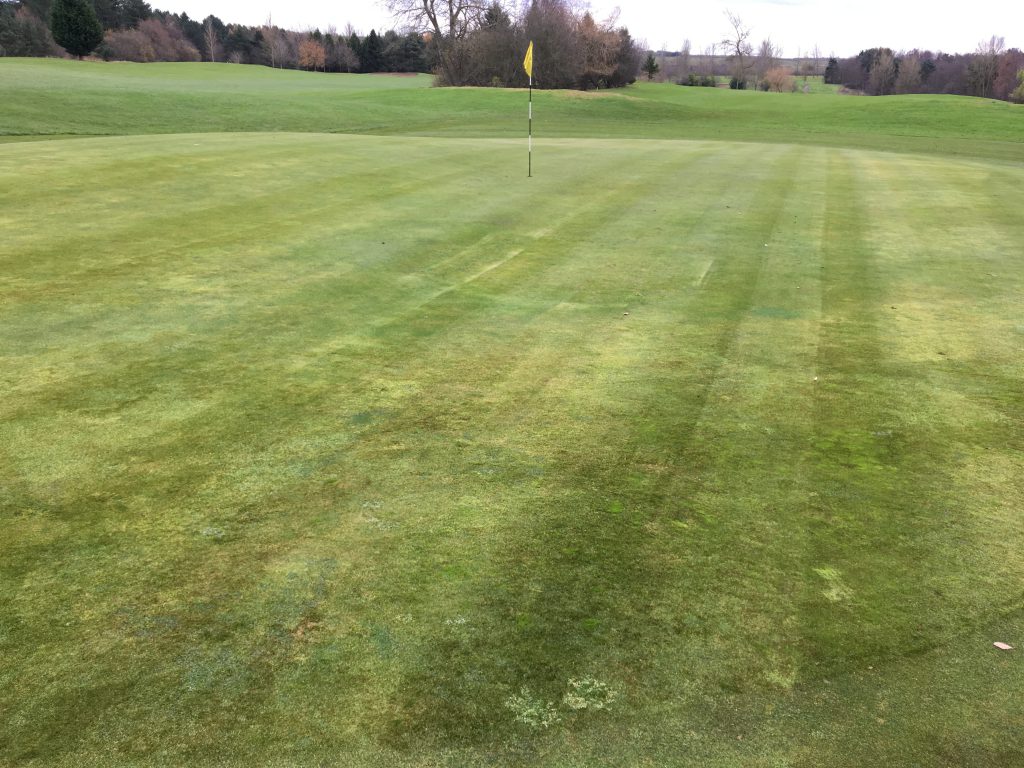
A poorly fed and maintained green is likely to have a detrimental effect on return business for a golf course
On my travels as an agronomist I am regularly surprised at fertiliser choices on golf courses. Sometimes it seems like some recommendations or buying choices for fertiliser inputs resemble NPK lottery number selection than a logical fertiliser choice exercised with good science and reasoning.
Fertiliser is defined as ‘a chemical or natural substance added to the soil to increase fertility usually to increase growth and yield of the crop present growing in that soil’.
We apply fertiliser to grass to maintain its condition and health and unlike, our agricultural and horticultural colleagues, are not interested in higher yields; indeed we are generally interested in exactly the opposite! Ecological niches of our desired fine leaved grasses are adapted to growing in impoverished environments such as sandy soils on heathland or links areas where low nutrient retention in the soils and, sometimes, atypical soil pH values (acidity / alkalinity) limits the availability of nutrition elements / molecules available to the plant.
As greenkeepers we know that the plant must be helped to an extent, especially in high wear areas or places where the plant is put under stress. Greenkeepers are always courting disaster because the mortality of grass plants in the sward will increase as cutting heights are lowered. At the point where the number of deaths of plants in the sward exceeds their ability to regenerate, the sward, and therefore surface, begins to fail. When we mow or verticut we put the plant under physical stress (damage, reduced leaf area, removal of photosynthetically productive tissue and so on) and also we remove chemicals that have been made by the plant that have gone into creating its living tissue – in cutting we therefore remove both living chemistry and increase demand by the plant to obtain more chemicals needed for growth. Consideration of the table below indicates some of the major nutrient contents in plants and it is important to remember that the largest component of elements in the plant are: carbon (44 per cent), oxygen (44 per cent) and hydrogen (five per cent) which are held in organic molecules created by photosynthesis.
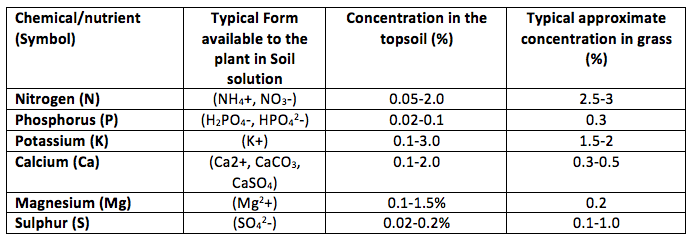
Typical chemical percentages of macronutrients within the plant
So in considering fertiliser we have already identified that there are choices to be made relating to the soil, the plant and the greenkeeper and the three parts need to be understood before determining what to buy / apply.
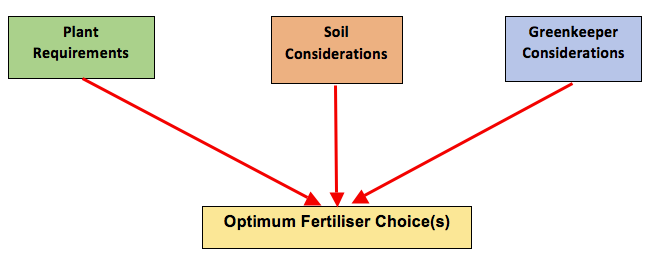
Optimum fertiliser selection interrelates to three overall factors
The requirement to replace materials available to the plant relates to the three criteria in different ways as shown in the examples below.
Plant
- Nutrients required by the plant – how much nutrient is in, or needed, by the plant?
- How much wear and damage needs to be repaired?
- What type of grass is it and how does this impact on its needs?
Soil
- Status of soil fertility – how much nutrient is in the soil?
- How available nutrient is in the soil – CEC, clay content and type, Clay:Humus complex, soil pH.
- How much organic matter is present.
- Drainage rates – how much nutrient tends to leach out?
- Irrigation inputs – how this helps to make nutrients soluble in the soil and how much it might wash out nutrients the plant needs?
- How salty is the soil already?
Greenkeeper considerations
- How good do I need it to look?
- How quickly / slowly do I need it to take effect?
- How easy is it to put on?
- How expensive is it?
- How much do I need through the year?
- Can I apply it in a way as to minimise player disruption and play interference?
- If it is a granular / pelleted how large are the pellets / prill? Are they uniform in size?
- Will it release nutrient when I want it to?
- Are there any side effects?
As can be seen it is not actually an easy process. Indeed, even just the plant and soil element is complicated, but throw in the human element and it gets far more complicated. This complication is added to by some non-technical elements which impacts on buying decisions, which is a whole other ball game!
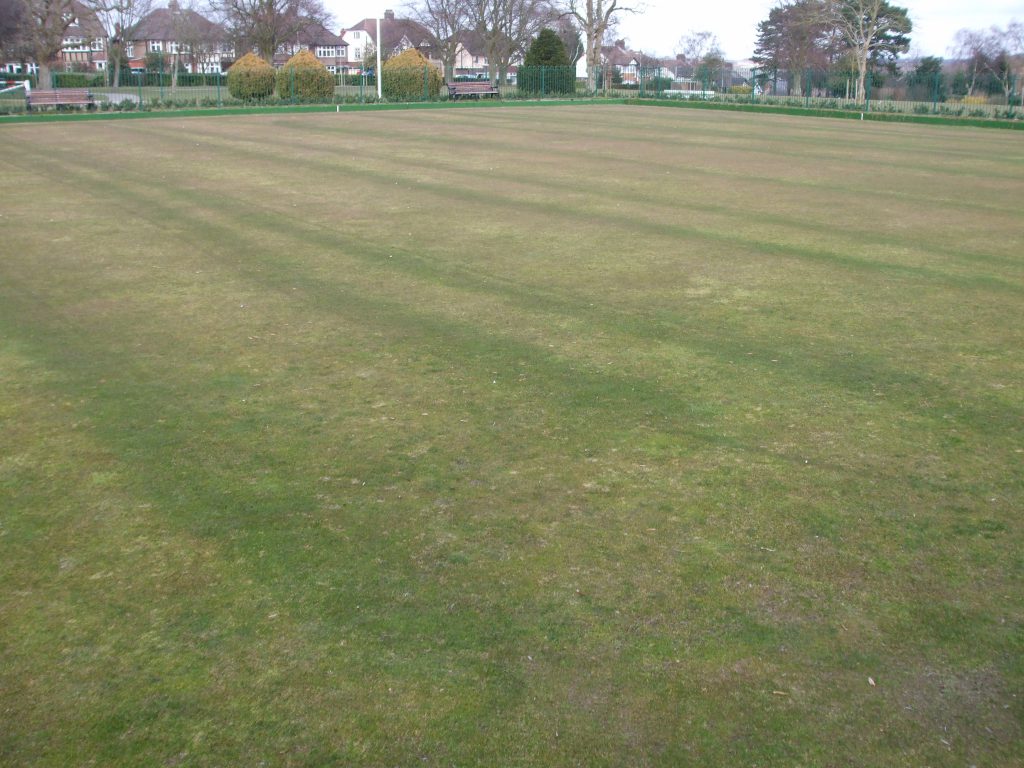
Ensuring fertiliser application is even is a primary skill for greenkeepers in ensuring good presentation and plant health. It is more easily achieved when even sized pelleted fertiliser is employed rather than blended products with variable size particles
The intent now is to focus on spring so the key things to remember in spring are:
- Plant needs are low to moderately low but increasing to high in the next few months with nitrogen usually the crucial limiting nutrient. It is therefore essential that the plant is not compromised by lack of nutrient.
- Soil condition is unfavourable in the spring because soil temperature is likely to be low / cold – this is crucially important because the bacteria, mycorrhiza and roots are cold therefore their metabolic rates are slow and their activity severely limited.
- Furthermore the soil may be wet or even waterlogged – thus pore spaces are filled more with water than air, so oxygen availability may be severely limited and some accumulation of toxins may exist as a result (high CO2, hydrogen sulphide H2S and so on), which compound the low temperature effect with further limiting factors on soil microbial activity.
- As a consequence complex nutrients such as urea, organic nitrogen sources and ammonia-based N sources applied in early spring are not readily available to the plant therefore nitrogen needs to be applied in a form that is easily available to the plant – that means nitrate (NO3-) based fertiliser (potassium nitrate, ammonium nitrate, sodium nitrate) that is immediately available to the plant.
- Greenkeeping – many considerations factor on greenkeepers and, ultimately, putting on fertiliser while cutting heights are still up a little makes choices less critical than in pre-tournament times.
- In spring I would argue that the key driver is temperature!
Temperature is critical because soil bacteria seldom function well at low temperatures and even less well when the soil is also wet and has limited oxygen availability.
The nitrogen sources all require breaking down by the soil bacteria as would happen naturally in the nitrogen cycle.

For cold soils the choice of fertiliser is therefore critical – you could apply tonnes of urea but if there is no soil biological activity there is no breakdown of the molecule into ammonia that will be available to the plant and still no further breakdown through nitrite to nitrate. Therefore in cold conditions the plant needs nutrients it can immediately access and nitrate is the ideal candidate.
However, as spring progresses, the fertiliser needs to have other nitrogen sources available. To this end either apply a nitrate based feed only and follow on with another product with more balanced release later or use a product with an element of nitrate and other ingredients to prolong nutrient release.
Important considerations abound when buying fertiliser – greenkeepers are bombarded by sales approaches, some good, many not so good, and in recent years the marketplace has contained some products plugged as cold temperature specific when it has not been. Fertilisers loaded with iron (Fe) will darken a turf as all greenkeepers know but nutritionally some of these products provide virtually no nitrogen until the soils warm up considerably – by which time the greenkeeper may have put a second application on and then be cutting down a grass factory by May time. It is not enough to simply ask what the numbers are on a bag, an NPK analysis can be utterly valueless, there are other more important questions. In this respect greenkeepers sometimes don’t know the questions to ask and rely too greatly on the salesman for advice without thinking about what they are buying. So ask questions and seek a second opinion if necessary – there is never such a thing as a dumb question. If you don’t understand the justification or the sales pitch take a step back and consider it carefully!
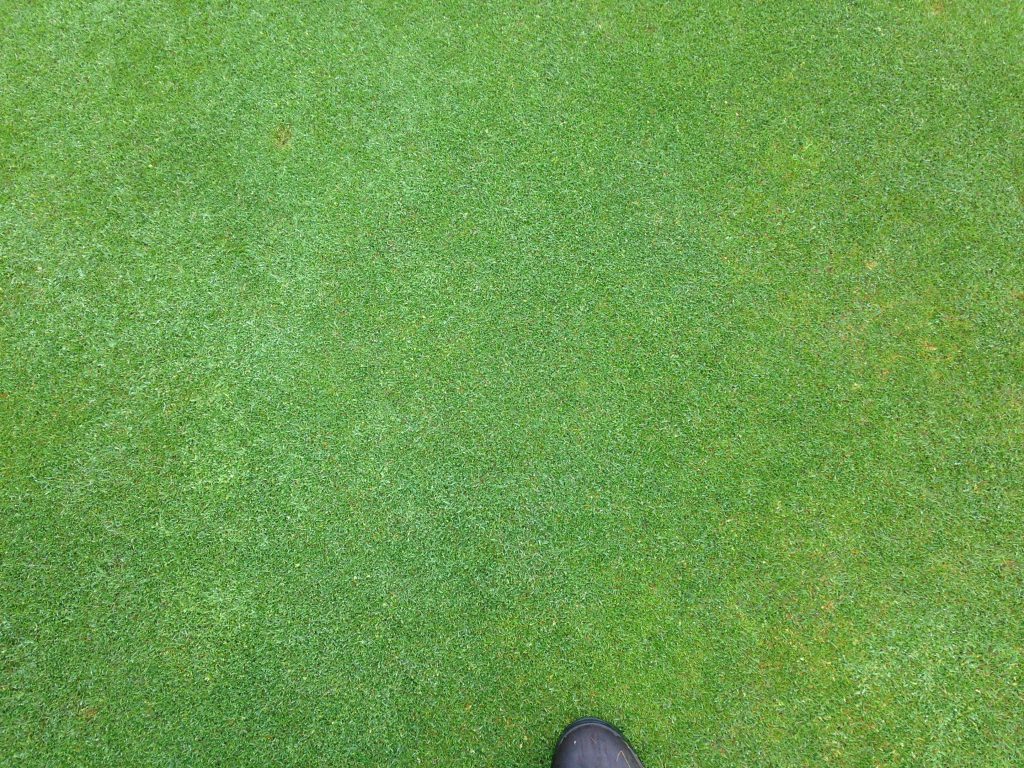
One last point, freely available nitrate based fertiliser is great in the winter and early spring … it is not so great in summer. when it can produce very fast flushes of soft growth that are disease prone. It’s better to use other materials at this time and optimise the results obtained on your course.
Noel Mackenzie is a member of Greenkeeping’s editorial advisory panel and is the principal consultant at Sports Turf Consulting. Tel: 07739 505862 or email info@sportsturfconsulting.co.uk

























